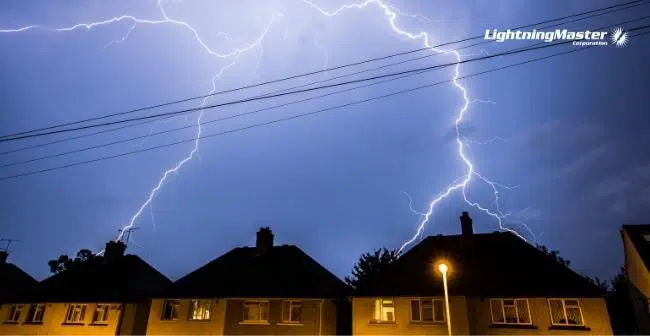The Electromagnetic Threat Posed by Lightning —An EMP Preparedness Guide
Lightning is the most spectacular element of a thunderstorm. Lightning strikes release raw power in the form of electricity, light, and heat in a matter of milli- or even microseconds. While a direct lightning strike will cause significant damage to structures and electrical equipment, most damage results from electromagnetic pulses (EMPs). As such, most engineered structures require some form of EMP and surge protection.
Electromagnetic pulses from lightning strikes damage or destroy sensitive electronic equipment by generating over-voltage and power surges. Even though these surges are short-lived, they can drive tremendous amounts of energy through your facility’s electrical circuits, causing extensive damage to equipment and electrical systems.
What’s more, lightning induced EMPs will almost always exceed the voltage ratings of your devices, and the effects can span a wide frequency range. These surges can propagate for miles, disrupting any industrial, commercial, or military equipment in their way. Electromagnetic pulses also produce damaging currents within power transmission and communication lines, complicating the functions of essential electronic equipment.
So, how can you protect your assets from EMPs caused by lightning strikes?
The Fundamentals of Lightning and EMP Protection: A Three-Pronged Approach
Lightning is an unpredictable event causing losses in the billions of dollars each year. For this reason, it’s crucial for businesses to mitigate their risks with a comprehensive lightning protection system.
In their most elementary form, lightning protection systems create a protective “shield” around a facility by intercepting lightning strikes and discharging them to the Earth. That said, Lightning Master’s three-pronged approach to lightning protection consists of three critical steps:
Structural Lightning Protection
Structural lightning protection consists of a strike termination system (lightning rods) positioned at the highest and most exposed extremities of a structure. These air terminals become the most likely point of contact for a lightning strike. There’s a common misconception that lightning rods attract lightning, but this isn’t the case. Air terminals simply intercept lightning strikes and provide the quickest path to the ground.
Typically, it’s possible to direct lightning to a preferred attachment point to increase the likelihood of strike termination with Early Streamer Emitting (ESE) air terminals. The reverse is also possible as you can discourage lightning from attaching to a protected structure using streamer-delaying air terminals.
Bonding and Grounding
The second step in effective lightning protection is bonding and grounding. Bonding is the process of bringing all electrical and metallic masses in a facility to the same electrical potential using conductors.
Grounding, on the other hand, brings all the bonded equipment to the potential of the surface of the Earth. These two processes create a functioning earth-termination system that allows for the safe operation of electric systems even during a lightning event. The bonding and grounding network must be implemented to provide a safe path to the ground for lightning strikes to achieve complete structural protection.
Transient Voltage Suppression
Finally, transient voltage surge suppression is another crucial subsystem of lightning protection systems. As mentioned, electronics are damaged mainly by transient voltage and current surges, which means there’s a need for EMP protection to stop power surges before they enter your facility and damage your electrical systems and equipment.
A transient voltage surge suppression (TVSS) device is designed to prevent electromagnetic waves from impacting and damaging sensitive electronics. It works by keeping the voltage at a value low enough to prevent damage to connected equipment, yet high enough to allow for normal operations. EMP protection prevents interference energy from exceeding the rated impulse voltage.
As you can see, EMP protection is only one element of a complete lightning protection system. The three-pronged approach allows for comprehensive lightning protection and mitigates the risk of both direct and indirect lightning strikes. The complete system will include air terminals, conductors, ground terminals, inter-connecting bonding, and surge protection devices. This way, you can have structural and EMP protection.
Comprehensive Lightning and EMP Protection with Lightning Master
It’s important to evaluate the need for lightning protection for every industrial facility. A lightning protection system is recommended to be installed whenever the lightning strike frequency exceeds the permissible risk.
Working with an experienced lightning protection contractor ensures that the installed lightning protection system is designed and installed for your facility according to the latest codes and standards. Once the system is installed, regular maintenance and periodic safety checks will ensure it continues to work as it should.
At Lightning Master, our team works to provide customizable lightning protection solutions to prevent your assets and facilities from being damaged. Contact our team today to schedule a site inspection and risk assessment.




